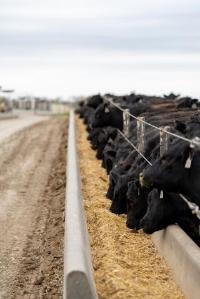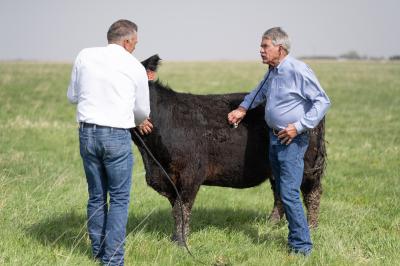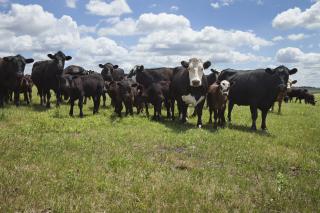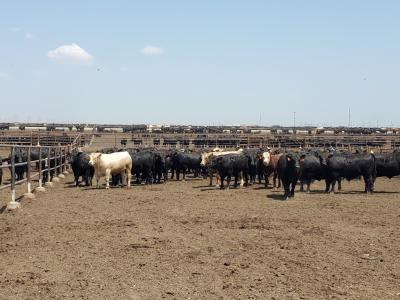What is Bovine Respiratory Disease?
The Bovine Respiratory Disease Complex (BRD) groups together different diseases affecting the respiratory system of cattle, such as bronchopneumonia. It is commonly referred to as shipping fever in feedlot cattle or enzootic calf pneumonia in young dairy calves.
Bovine Respiratory Disease Complex (BRD) groups together different diseases affecting the respiratory system of cattle, such as bronchopneumonia. It is commonly referred to as shipping fever in feedlot cattle or enzootic calf pneumonia in young dairy calves.
BRD is the most common and costly disease complex in North American Beef and Dairy Cattle(1,2).
Several factors contribute to BRD, some of which are of particular importance:
- Animal: age, anatomy, source, and immune status
- Management: handling, housing conditions, vaccination status, biosecurity measures
- Microbes: multiple bacterial and viral agents are involved
BRD is commonly associated with immunosuppressive situations caused by stressful factors such as transporting, loading, and commingling of cattle.
Bacterial Agents
 Mannheimia haemolytica
Mannheimia haemolytica
Gram negative bacteria, an organism frequently found in the normal respiratory tract of ruminants with overgrowth causing severe lesions of the pulmonary parenchyma.
Pasteurelia multocida
Gram negative bacteria and commensal organism found in the deep pharyngeal region, especially in young calves, inducing lung inflammation.
Histophilus somni
Gram negative bacteria and commensal organism of the nasopharyngeal region and lower respiratory tract, producing histamine which may explain early respiratory damage.
Mycoplasma bovis
Anaerobic bacteria of the deep respiratory tract, causing the lipid peroxidation of the host cell wall, and responsible for the phenotypic variation allowing evasion of the immune responses of the host.
Viral Agents
 BHV-1 (IBR)
BHV-1 (IBR)
Bovine Herpesvirus Type 1 (BHV-1) or Infectious Bovine Rhinotracheitis (IBR) as it is commonly known, initially infects the epithelial cells of the upper respiratory tract, then spreads to the lower respiratory tract and induces immunosuppression. The IBR virus causes permanent infections.
PI3
Bovine Parainfluenza virus type 3 (PI3), together with other pathogens, forms the complex of enzootic pneumonia and causes primary infections in the epithelial cells of the trachea, bronchi and alveoli, causing necrosis of the ciliated epithelium and leading to mucociliary erosion. This predisposes the lung tissue to secondary bacterial infections.
BRSV
Bovine respiratory syncytial virus (BRSV) can be considered a primary pathogen of BRD. The primary infection begins in the nasal cavity, pharynx, trachea, bronchi and bronchial epithelial cells. It induces cilia loss or necrosis of bronchial and bronchiolar epithelial cells, providing an ideal environment for bacterial colonization. Ultimately, severe BRSV infection can result in subcutaneous emphysema.
BVDV
Bovine Viral Diarrheal (BVD) virus destroys alveolar macrophages inducing immunosuppression, and is associated with a wide spectrum of disease.
Respiratory Coronavirus
Bovine respiratory coronavirus contributes with other agents to enzootic calf pneumonia or shipping fever.
BRD Risk Factors
The simultaneous management of several risk factors is critical to properly deal with preventive and therapeutic approaches of BRD.
![20210805_125315-resize400x300.jpg]() Inherent risks:
Inherent risks:
Sex, Age, Weight at arrival, Immune system status, Operating procedures, Quarantine & Acclimation process, Vaccination
Balanced ration:
Mineral and vitamin supplementation
Farm structure:
Space at the feed bunk, Pen design, Cooling system
Nutritional management:
Balance ration, Mineral and vitamin supplementation
Symptoms
Symptoms usually develop within 4 weeks after weaning / shipment in beef calves and can range from mild to severe.3
- Fever
- Depression
- Increased respiratory rate
- Cough
- Nasal discharge
- Griffin D. Economic impact associated with respiratory disease in beef cattle. Vet Clin North Am Food Anim Pract. 1997;13:367–377. [PubMed] [Google Scholar]
- USDA 2011, 2012
- Smith, Bradford (2009). Large Animal Internal Medicine (4th ed.). Mosby Elsevier.

 Inherent risks:
Inherent risks: